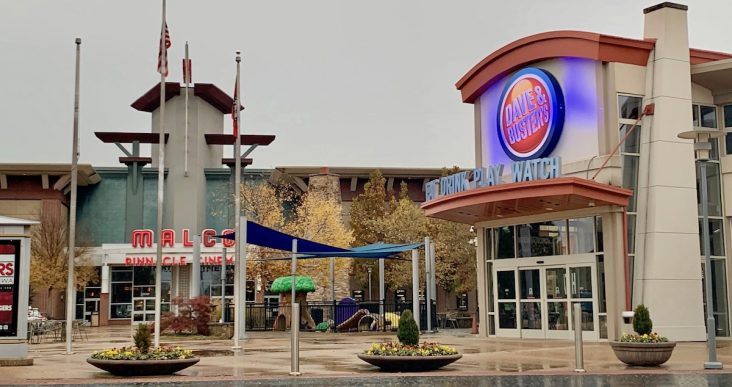Young consumers doing more eating than shopping at malls
by November 7, 2019 5:12 pm 912 views

Shopping traffic in malls has continued to decline in recent years, even during the peak holiday season, but consumers who do frequent malls are more apt to eat at mall restaurants than shop in the mall stores, according to a recent survey from UBS.
The financial services firm found this year 7% of consumers said they are going to the mall just to eat, which is up from 4% last year. This is not a surprise given that more retail sales are moving online in many categories like apparel, now at 25% of total category sales. UBS expects 31% of apparel sales will take place online by 2023.
“Shoppers say they increasingly go to the mall to eat at the food court or just hangout instead of visiting a big box store,” UBS Analyst Jay Sole said.
He noted that younger people are leading the changes, with those between the ages of 18 and 34 buying more clothes online than older generations. USB reports this age demographic is spending 38% of its apparel budget online this year, growing about 6% over the three two years. USB predicts this trend to be a drag on department store chains that often anchor malls such as Macy’s and J.C. Penney. This disruption in the apparel industry will go on for “at least the next five years,” Sole said.
UBS surveyed 2,500 consumers on their intentions for holiday shopping this year. The report found one in five respondents plan to shop at department stores this holiday season, down from one in five last year. UBS said the internet has fundamentally challenged malls’ value proposition.
“The mall, in the past, was a great aggregator. It was a one-stop-shop where consumers could see everything happening in the world of fashion. Today, the vast majority of fashion discovery happens online. Consumers don’t need the mall to help them figure out what is cool,” Sole noted in the report.
Giri Agarwal, chief strategy officer at Incisiv, said during a recent webinar on retail formats that young consumers are after shared experiences and are attracted to venues with superior store experiences that can engage them with relevant products. He said the new American Dream mall in New Jersey, near the Meadowlands, is a retail format for the future. The venue is about 50% entertainment and 50% retail. The mall has roughly 100 places to eat, including 23 full-service restaurants, three food halls – including the first Kosher food hall in the U.S. in a retail destination – and a food court. Some of the restaurants in the mall feature live entertainment.
Agarwal said new malls are not the antidote for declining brick and mortar stores, but malls that attract people for experiences are the best positioned for long-term success. Agarwal said Casi Mimi in California, an Airbnb venue that is also a store, is another example of merging retail with experience.
He said retailers that can bridge online with brick and mortar also engage consumers on a deeper level. Big box retailers like Walmart and Target have done a good job with this, and Kohl’s also has positioned itself as a forward thinker by the partnerships it has with Amazon for online returns.
Agarwal said malls and big-box retailers will have to continue to try new formats and learn to tailor experiences that fit with local demands. He said consumers in Lubbock, Texas, have different demands than those in San Francisco and each has their own ideas about convenience.
